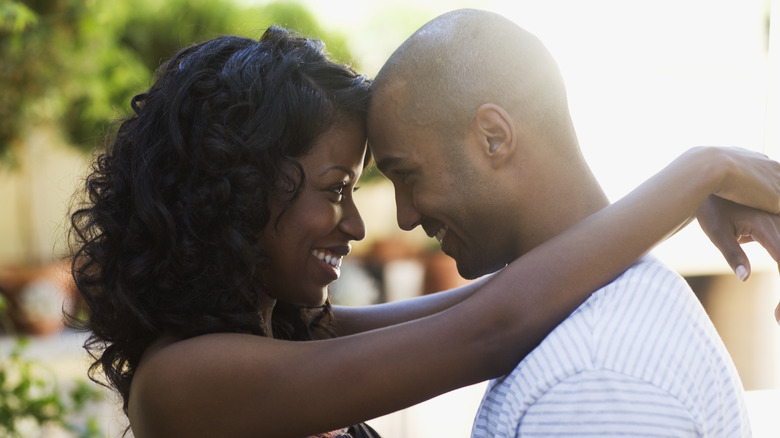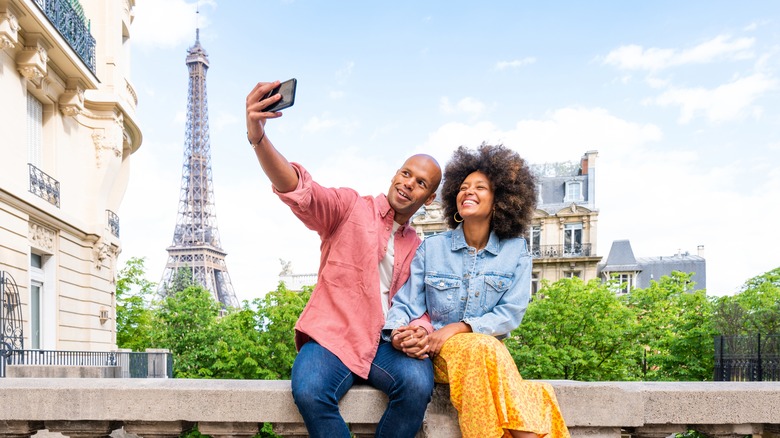An Estimate On How Long It Actually Takes To Fall In Love
Falling in love is arguably one of life's best experiences. Mentally, you might feel euphoric and become obsessed with your crush (per Live Science). You may begin to idealize them, dreaming up a perfect fairytale future together. Changes also happen to your body when you're in love. Shifts in hormones bring you and your love interest closer, you might be less sensitive to pain, and your heart will likely beat faster than usual.
Love can feel exhilarating, but it's not exactly easy to come by. In fact, one survey of 2,000 people by Siemens Festival Nights (via The Telegraph) showed that the average person falls in love only twice during their lifetime. And while love may be something most people want to experience, it can't be forced. According to psychologists, falling in love requires at least 10 different conditions to be met, including similarity between partners, reciprocity, and relationship readiness, per Insider.
Another factor is time. Couples need regular alone time spent getting to know each other to fall in love. But how much time is actually required before you can be swept off your feet?
Here's how long it takes to fall in love
Let's cut to the chase: there's no one "normal" timeline for falling in love, says Healthline. Falling in love can look different — and even mean totally different things — to different people. However, research has uncovered how long it takes for someone to feel romantic attraction, as well as how long it takes them to confess their feelings.
BBC Science reports that it takes as little as 90 seconds to decide if someone is attractive, based primarily on body language. A 2010 study published in Evolutionary Psychology (via ResearchGate) pointed out gender differences, with men being more likely to fall in love quickly. However, the study suggested that this might be due to differing definitions of love between men and women.
Similarly, men might be quicker to profess their love compared to women. In heterosexual relationships, a 2011 research review published in the Journal of Personality and Social Psychology (via APA PsycNet) found that men feel ready to say "I love you" after 97 days, while women require 149 days.
What about love at first sight?
If most people don't feel confident using the L word until at least a few months into their relationship, where does that leave love at first sight and other early-dating butterflies? Psychologist and sex therapist, Lauren Fogel Mersy, told MindBodyGreen, "There can be a strong attraction at first sight, but romantic love for someone requires knowing who they are, the fullness of their character." That feeling of attraction and excitement, in the beginning, is likely little more than infatuation. According to Couples Counseling ATL, infatuation doesn't last forever. So when it becomes true, lasting love, those early butterflies might not mean much. Instead, it's the companionship and intimacy that replace infatuation that matter.
Healthline also makes an important distinction between falling in love and loving someone. Being "in love" can happen early in a relationship, but loving someone means you can be yourself with them, you accept your partner as they are (including their flaws), and you share a deep connection. While love — or at least infatuation — at first sight may exist, and falling in love might be swift for some, building a healthy relationship can take more time.


